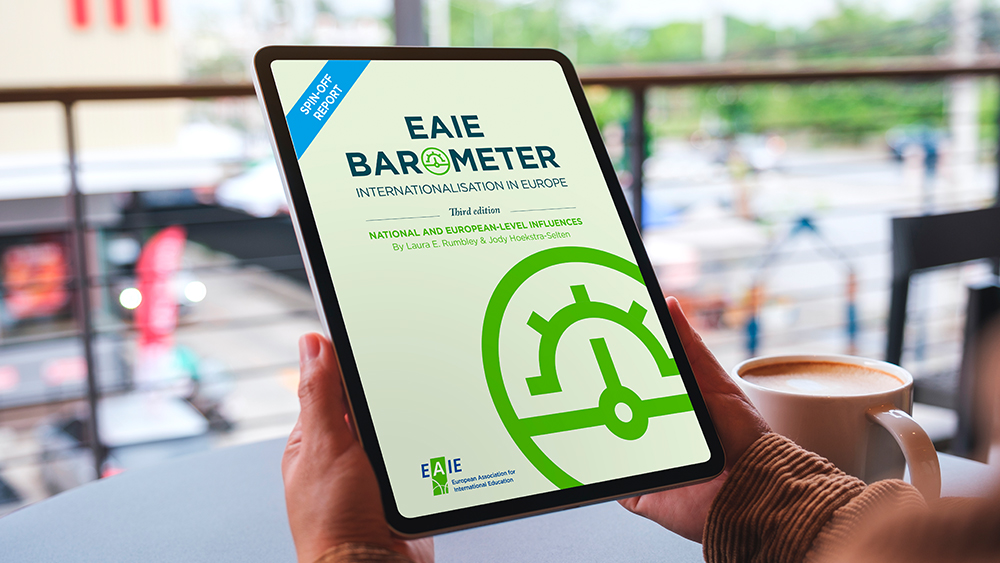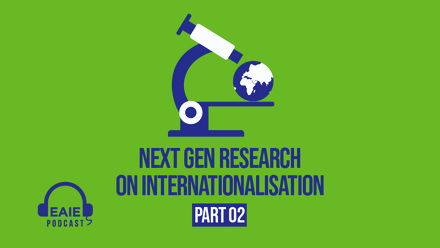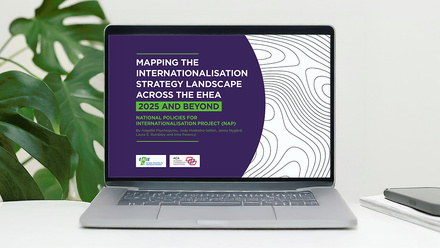Research Snapshot: EAIE Barometer: National and European-level influences

EAIE Barometer: Spin-off report
Published date: 25/06/2024
This publication is a spin-off report from the EAIE Barometer: Internationalisation in Europe (third edition) report, published by the authors in March 2024. As with that main report, this spin-off drew from the responses of just over 2800 individuals working in international higher education (IHE) across the EHEA, but zeros in specifically on how respondents see the influence of both national and European-level authorities, programmes, and instruments on the internationalisation agendas of their institutions. The purpose of this exercise was to provide an indication of how frontline IHE professionals perceive the sway of these key policy making/steering/funding actors. The data is analysed through three main lenses, notably in terms of whether respondents perceive national and/or European-level influences to be highly influential, not at all influential, or somewhat influential. Similarities and differences in perspectives are explored across such variables as geographic region, respondents’ professional profiles, size of institution where they work and more.
This report provides unique insight into the perspectives of frontline international higher education professionals on the influence of national and European-level policies on internationalisation at the institutional level.
About the authors
Key findings from the research:
- A majority of all respondents currently see national authorities (58%) and European-level authorities (53%) as either ‘highly influential’ or ‘influential’ when it comes to being drivers of their institution’s goals for internationalisation. Yet, these percentages are slightly lower (at 68% and 66%, respectively) than the results collected in a parallel line of inquiry for the 2015 Barometer report. Institutions might no longer need or look for guidance and support at the national level or European level in the same ways they might have done so a decade ago.
- There are very real differences across countries and regions with respect to perceived levels of influence of national and European-level policies.
- Academic staff and early career professionals stand out as two target groups that might benefit from being better informed about the links between their institutions’ internationalisation activities and the aspirations of national and/or European- level authorities in this area.








